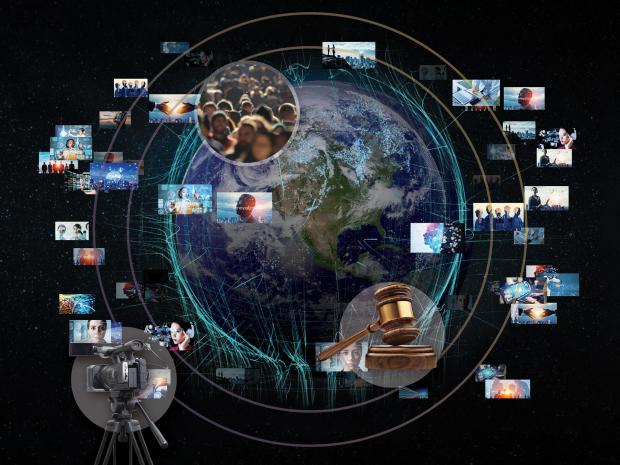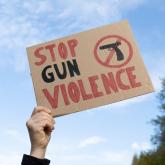Exploring Gun Violence Through Data

A new approach to understanding America’s “firearm ecosystem”
On a somber April day in 2007, Maurizio Porfiri’s life took a turn he could never have predicted.

Porfiri had recently moved to New York City to start his career as an engineering professor at NYU Tandon when a mass shooting at Virginia Tech — where he had earned his Ph.D. the year prior — claimed the lives of 32 people.
The victims included some of Porfiri’s close colleagues and mentors.
The tragedy galvanized Porfiri’s determination to help find solutions to mitigate the devastating effects of gun violence. As he continued acquiring new data science skills in the subsequent years, Porfiri became convinced that research like his could provide solid scientific evidence to inform effective public policies.

“I wanted to contribute something meaningful towards solving the problem,” he said.
Securing financial support for gun violence research proved challenging, however. The so-called Dickey Amendment, in effect from 1996 to 2018, severely constrained federal funding for all firearm research, slowing down scientific advancements in the field for over two decades.
So when Porfiri, Institute Professor of Mechanical and Aerospace Engineering, Biomedical Engineering, and Civil and Urban Engineering, as well as the Director of the Center for Urban Science and Progress of New York University, won a $2 million grant from the National Science Foundation in 2020 to investigate what he terms the “firearm ecosystem” — an intricate interplay involving individual behavior, state-level policies, and national dynamics — it distinguished him as one of the few academic gun violence researchers funded by the U.S. government.
Porfiri’s pursuit took shape through two interconnected research endeavors:
Causes of firearm prevalence and violence: Porfiri’s mathematical techniques uncover causal links between variables in the firearm ecosystem - media coverage, regulations, policies, for example — not just correlations between these factors. Porfiri honed these techniques in his other research into collective behavior, including his studies examining how some fish “lead” their schools’ movements.
Porfiri’s findings often challenge conventional wisdom, suggesting new possible solutions. His team’s investigation into the correlation between mass shootings and firearm sales, for example, found that contrary to popular belief, fear or protective instincts did not significantly influence gun purchases after mass shootings.
Instead, Porfiri’s research identified a strong causal link between media coverage of potential gun regulation and increased firearm sales. Individuals appeared to purchase guns in response to concerns about potential restrictions, sparked by media stories around regulatory measures. This insight lends weight to efforts to maintain a steady drumbeat of media discussion around gun regulation, rather than just when tragic events occur, Porfiri said.
More recently, Porfiri’s team, including Ph.D. candidate Rayan Succar, Postdoctoral Fellow Roni Barak Ventura and NYU undergraduate Sihan Wei, discovered that fame-seeking mass shooters — as opposed to those motivated by personal grievance or revenge, for instance — attempted to draw outsized attention to themselves by deliberately choosing unique targets and locations for their crimes.
This finding upended common assumptions that fame seekers sought notoriety mainly by trying to maximize casualties. It could strengthen the case for robust “red flag” laws, Porfiri said, so people threatening mass violence could be legally disarmed even if their threats seem outlandish based on historical precedent.
Mathematical modeling to fill data gaps: Gun violence research often grapples with inadequate, inconsistent, and outdated official data on gun prevalence and violence rates, leaving policy makers without vital up-to-date and accurate information to make well-informed decisions.
Porfiri’s team develops sophisticated mathematical models to generate indirect measures of those rates, bridging glaring gaps.
Recently, his team combined data from the U.S. government, police departments, media and other sources to create a model that predicts monthly gun homicide rates — up to one year out — with better accuracy than techniques researchers typically use. The model also “backcasts” as recently as one month prior, a significant achievement considering the federal government’s official monthly gun death data can be nearly two years old when it is released.
 The model could be incorporated into a public dashboard useful for policy development and advocacy, according to Porfiri.
The model could be incorporated into a public dashboard useful for policy development and advocacy, according to Porfiri.
Porfiri’s team also constructed a statistical model that predicts state-by-state gun possession and ownership rates, information lacking from any official government source. The spatio-temporal model fuses data from two available proxies, background checks per capita and suicides committed with firearms in a given state, providing results more accurate than either proxy on its own.
The team is now using the model to explore which policies are effective in reducing death by guns in a state and surrounding regions, and how the relationship between gun ownership and violent outcomes is disrupted by different legislation. Other upcoming research will trace how people buy guns based on their locations, investigate peer pressure’s role in gun acquisition, and interrogate causes of suicides by firearms. The researchers are also seeking to collaborate with cities to develop methods for monitoring illegal firearms.
As Porfiri’s team continues to navigate the confluence of engineering, mathematics, and gun violence research in America’s “firearm ecosystem,” they develop insights that challenge established norms, inform evidence-based policies, and pave the way towards a safer future where scientific findings could contribute to curtailing gun violence’s devastating impact.


